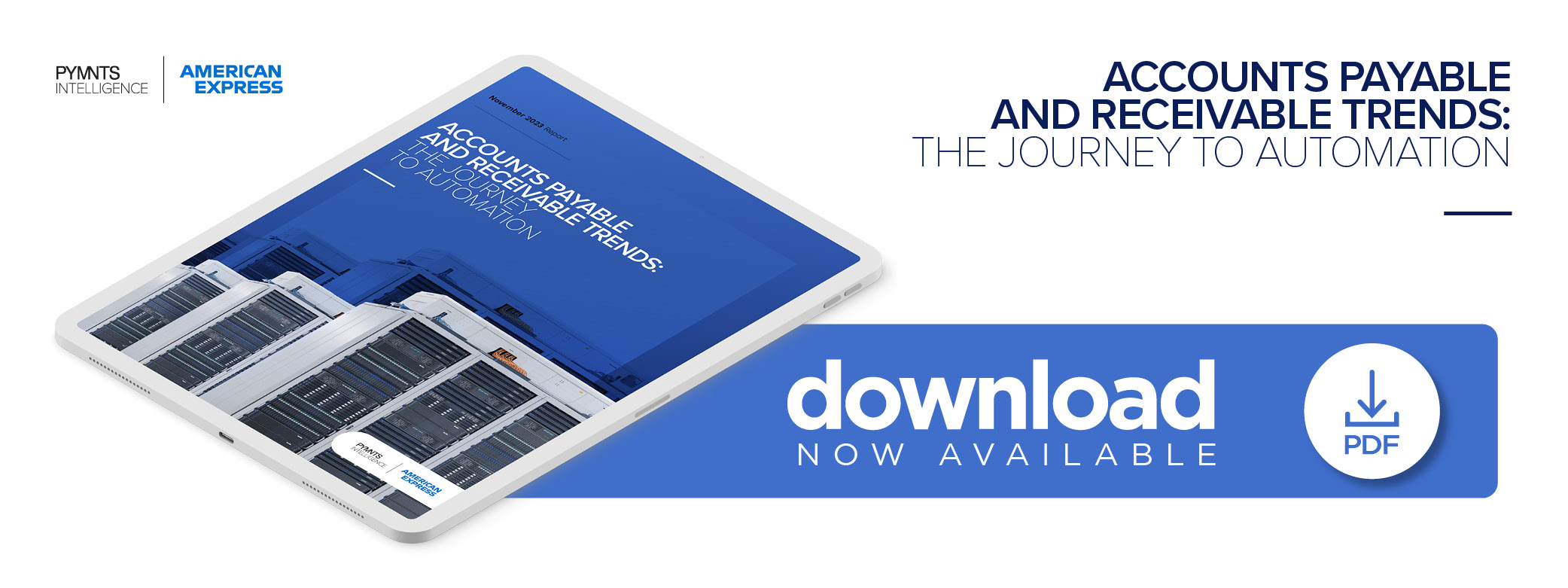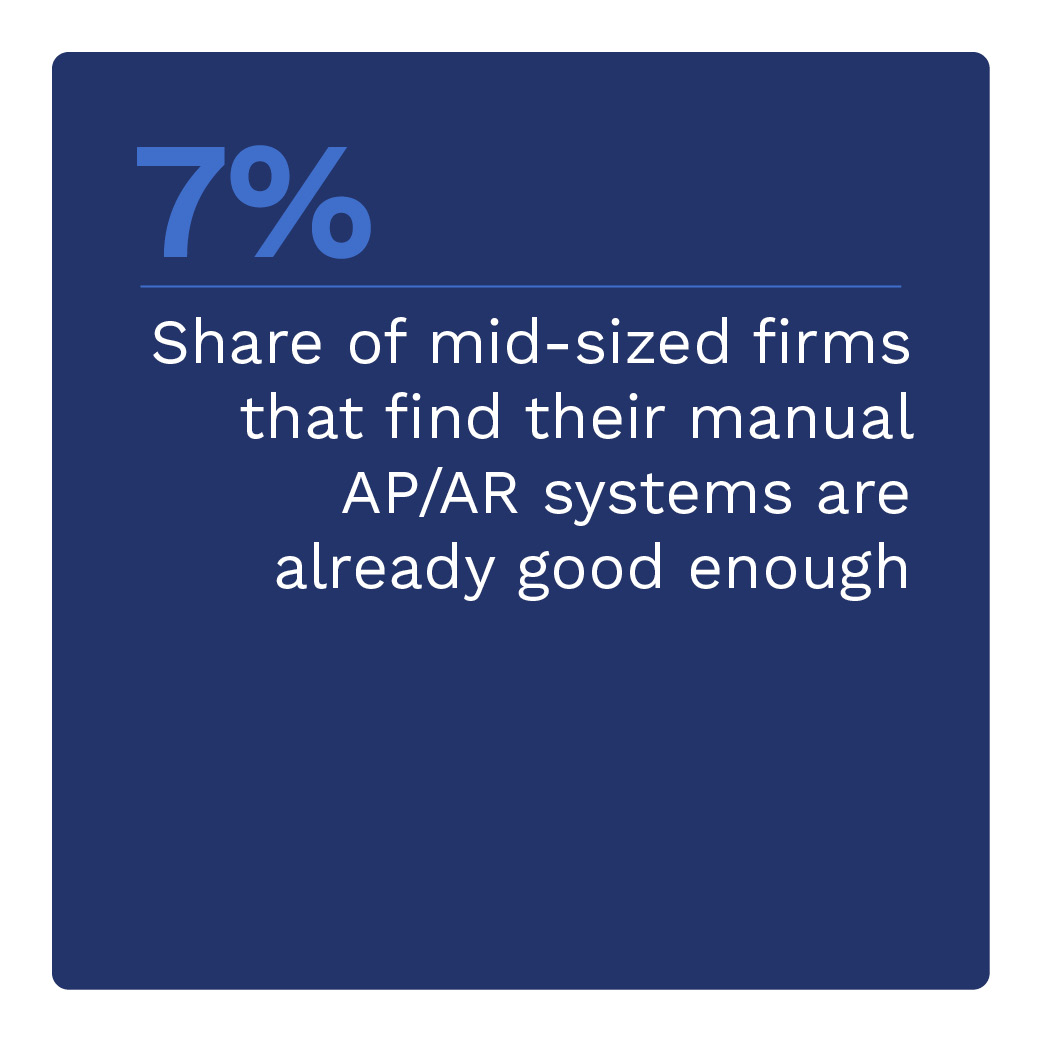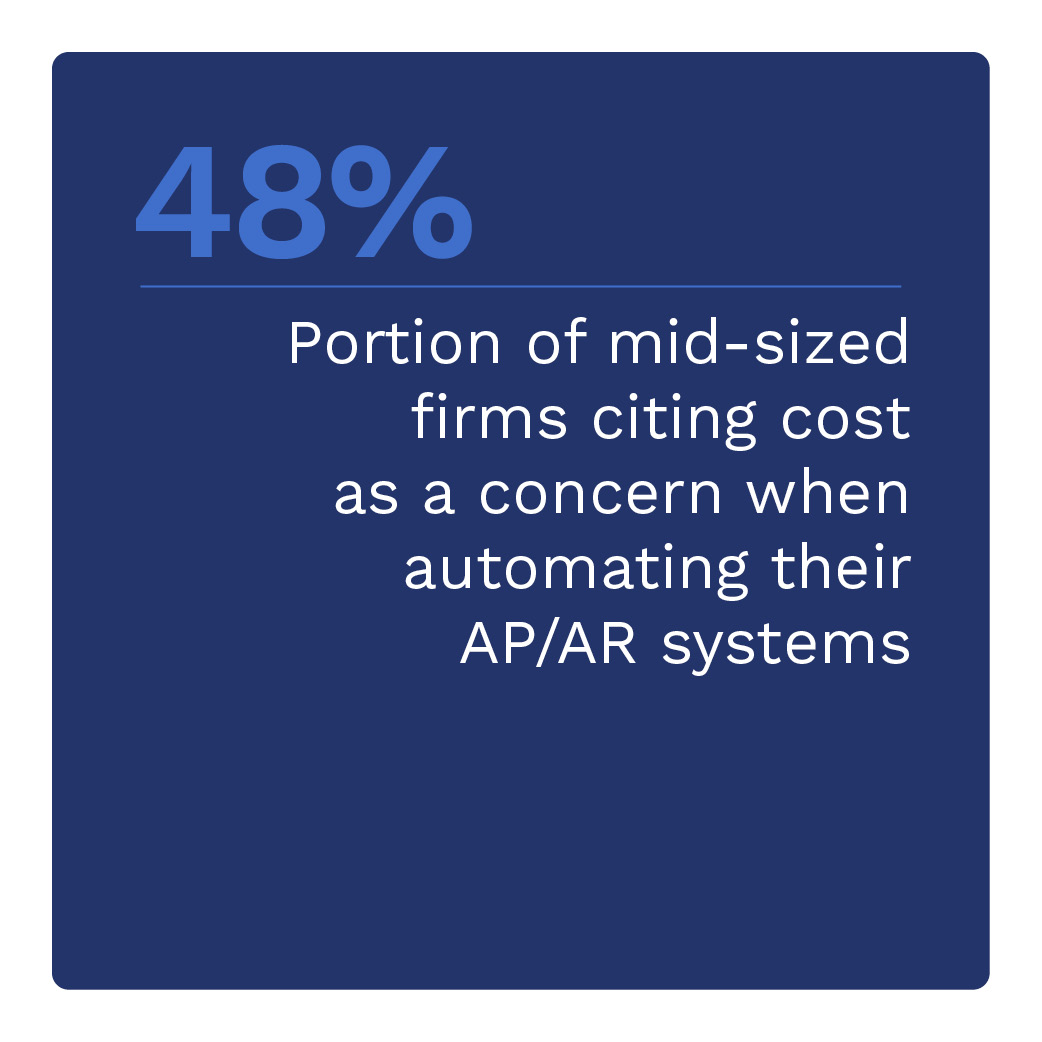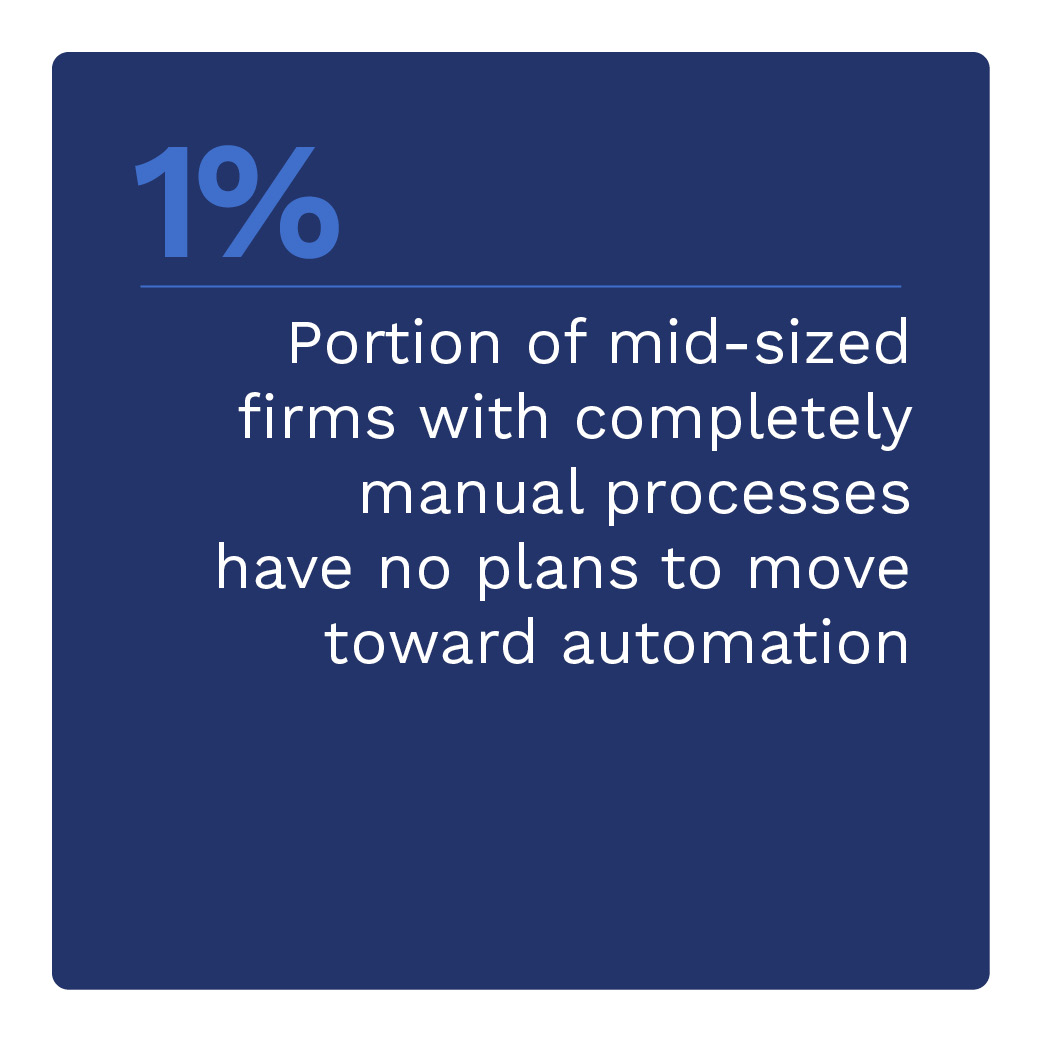93% of Middle Market Firms Say Current AP/AR Systems Don’t Cut It

Automating accounts payable (AP) and accounts receivable (AR) can provide a crucial edge for mid-size firms. Most that have done so report increased efficiency and enhanced cash flow. Data further shows they see the need, as few think their manual systems are good enough. Less than 1 in 10 firms put off automating for that specific reason.
However, 96% of mid-size firms encounter barriers to entry, including implementation costs that can be significant. As a result, automation represents a journey: Just 5% have completely automated all processes.
These are some of the key findings in “Accounts Payable and Receivable Trends: The Journey to Automation,” a PYMNTS Intelligence and American Express collaboration. This report explores the investments that mid-size businesses have made or plan to make to automate AP and AR processes. The findings are based on a survey of 412 executives with day-to-day and strategic leadership responsibilities in AP, AR and payments strategy, conducted from June 9 to July 5, as well as 83 follow-up responses gathered between Aug. 11 and Aug. 21.
Other findings from the study include:
The promise of saving time is a motivator for automating AP and AR processes.
Roughly 1 in 3 mid-sized firms push through impediments to automation, but compound effects ultimately motivate firms. While this may be a key motivator for one-third of mid-sized firms to automate, the potential of combined, overlapping benefits also drives the decision. Automating can lead to improved error reduction and fraud prevention, for example. When mid-sized firms ponder AP and AR automation, the promise of time saved represents just one compelling catalyst. Still, 37% of firms highlight time savings as a central trigger for automation.
The firm’s size can influence where it begins automation efforts.
 While roughly 1 in 4 mid-sized firms start automation with regularly scheduled payments and those of consistent amounts, smaller firms deviate from this trend. Smaller firms seem to be actively seeking financial benefits through automation, such as discounts for faster, on-time or automatic payments. This choice can yield immediate returns and reward these smaller firms focusing on near-term financial benefits.
While roughly 1 in 4 mid-sized firms start automation with regularly scheduled payments and those of consistent amounts, smaller firms deviate from this trend. Smaller firms seem to be actively seeking financial benefits through automation, such as discounts for faster, on-time or automatic payments. This choice can yield immediate returns and reward these smaller firms focusing on near-term financial benefits.
Ad hoc payments are not a priority when it comes to automation efforts.
Firms are less likely to prioritize ad hoc payments — those occurring less often or those of irregular size — as they begin automating their AP or AR systems. The data reveals that just 25% of companies prioritize payments with lower frequencies, and similarly sparse numbers emerge for irregularly sized payments. For automating the processing of smaller payments, the shares are similar across firms of varying sizes, suggesting a general hesitancy toward automating payments that may introduce unpredictability into the system.
Despite the demonstrable benefits of automating AP and AR processes, the journey is anything but easy for mid-size firms. Download the report to learn more about how executives at mid-size firms are approaching AP and AR automation.
